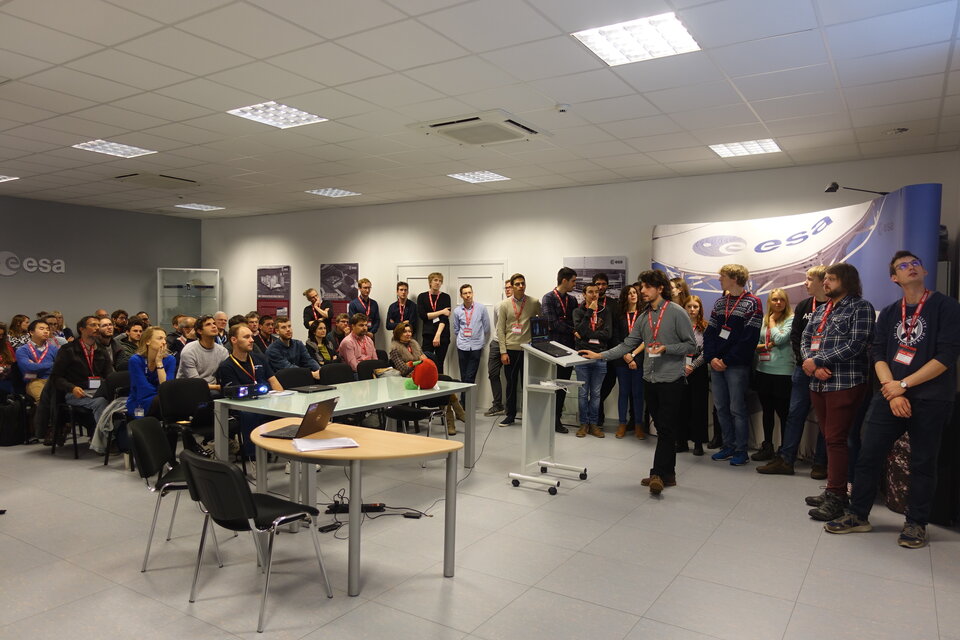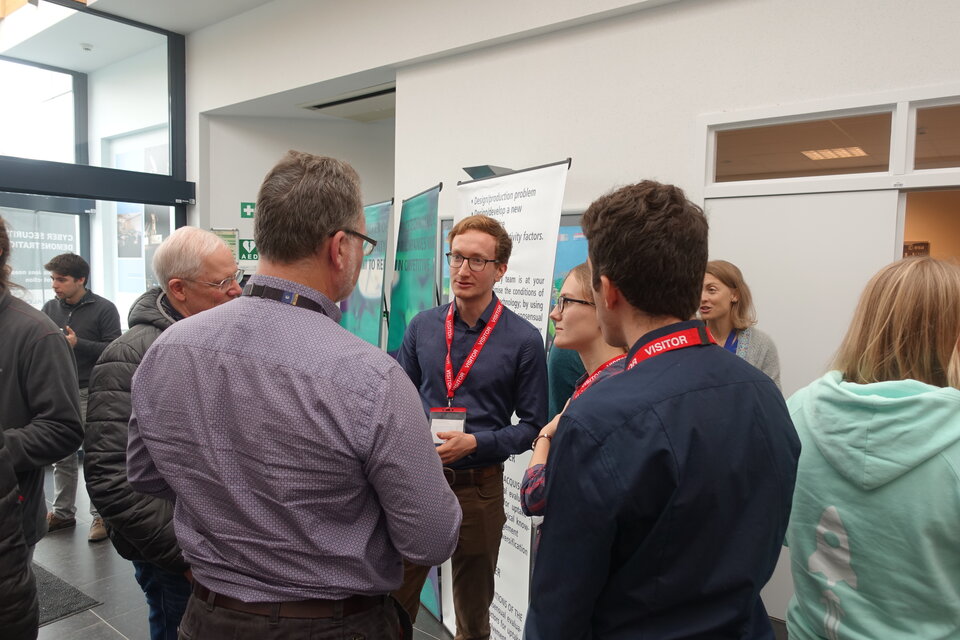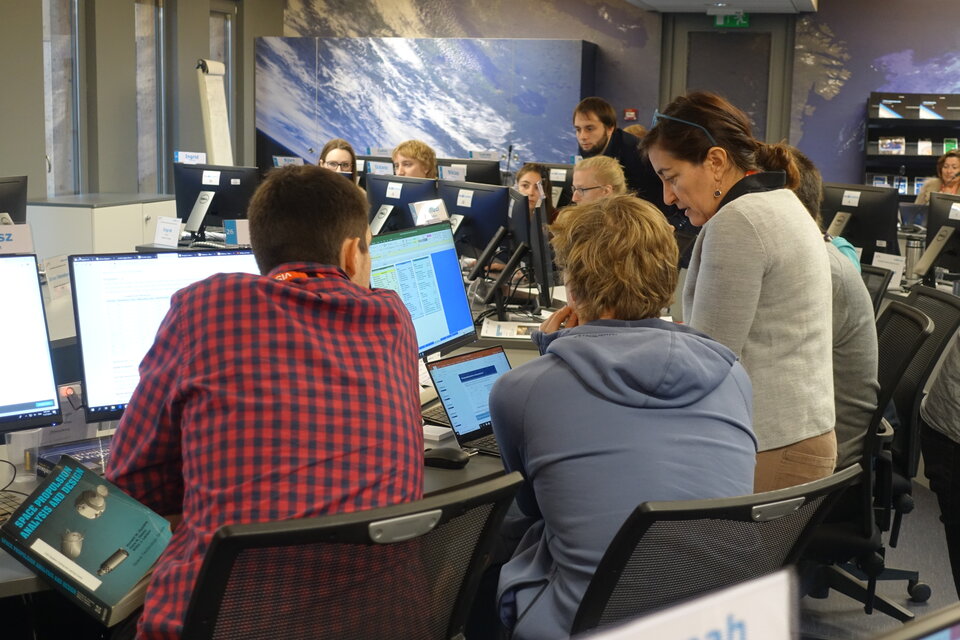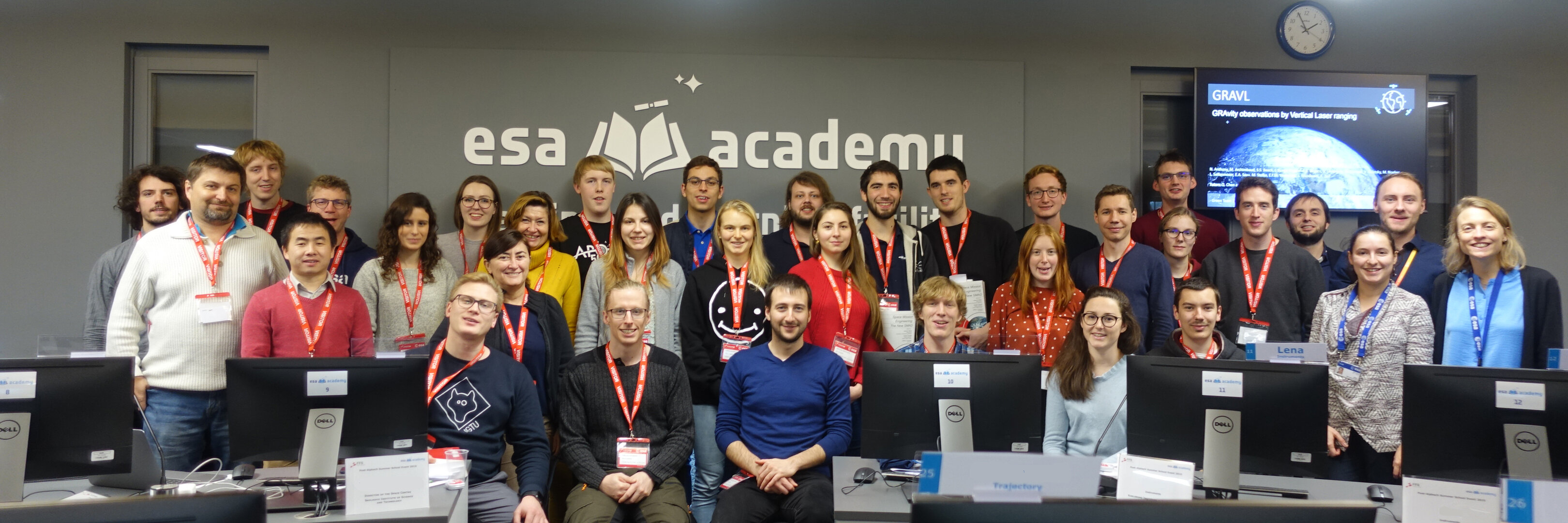Post-Alpbach Summer School Event 2019 takes students’ GRAVL mission to the next level
In July 2019, 58 students from 23 nations participated in the Summer School Alpbach 2019, organised in Austria by the Austrian Research Promotion Agency (FFG) and ESA. Four months on, from 25 to 29 November, the adventure continued with the Post-Alpbach Summer School Event 2019!

24 veteran students from the July school were chosen to participate at ESA Academy's Training and Learning Facility, ESA Education Training Centre, ESEC-Galaxia, Belgium. Their challenge was to use the Concurrent Engineering approach to enhance the design of the GRAVL mission (GRAvity observations by Vertical Laser ranging), which was first proposed by the Green Team during the Summer School Alpbach 2019. GRAVL’s goal is to study the mass redistribution in Earth’s upper mantle before, during, and after earthquakes. Green Team proposed to achieve this by measuring the vertical component of the gravity vector of low-orbiting satellites from a high-orbit laser ranging platform. This would allow the measurement of Earth’s gravitational anomalies with unprecedented accuracy and coverage, significantly improving our understanding of seismic processes.
On hand to offer guidance to the students was an ESA Systems Engineer, ably supported by a German National Trainee, both from ESA’s Systems and Concurrent Engineering Section. Their expertise was put to good use instructing attendees in the Concurrent Engineering approach. Five tutors from the Summer School Alpbach 2019 were also on-site to support the students with their science case.
“I was happy to witness the Post-Alpbach students 2019 enthusiastically working to improve the mission design of GRAVL originally developed during the Summer School Alpbach,” explained Michaela Gitsch, FFG, Summer School Director. “I saw a future crowd of European space experts learning and experiencing Concurrent Engineering – for some of the participants it was the first time they had contact with this approach. The 24 students were a great team with good team spirit.”

On Monday, the students were introduced to the concept of Concurrent Engineering, and were familiarised with the Open Concurrent Design Tool (OCDT). The students who were part of the Green Team during the summer then presented the GRAVL mission to the rest of the participants. Discussions about the mission objectives, requirements, and technical improvements followed straight after. In the evening, the students reviewed their design in light of comments from the experts. They were then divided into teams of two or three to efficiently cover the different aspects of the space mission, with each group working on one of the following disciplines: Configuration, Mechanisms, Structures, Propulsion, Power, Communications, Attitude & Orbital Control Subsystems, Thermal, Instruments and Trajectory Analysis.
“The Post-Alpbach Summer School Event was the perfect opportunity to gain hands-on experience in Concurrent Engineering, both from the point of view of methodology and software tools,” enthused a German student from the Karlsruhe Institute of Technology. “We elaborated a mission concept that was extraordinarily challenging from a technical point of view, such that technical expertise had to be acquired and applied. The workshop was demanding, yet rewarding, where teamwork and team spirit were essential to make progress.”
The following days were spent by each team of students iterating the design of their subsystem, making improvements to meet the requirements of the scientific objectives. Discussions did not end at the Training and Learning Facility, but continued well into the evenings! Said a German student from the University of Bern: “For me, as a scientist, it was a unique experience to get insight into the engineering tasks and to figure out all the small details, which become crucial in order to achieve the science objectives. Thanks to the motivated sub-teams and the short ways for communication, many workarounds were figured out in only a few days. The workshop clearly improved the communication and understanding between the science and the engineering sides.”

Designs were frozen on Thursday, with the rest of the day given to preparing the final presentation of the study results. Then, a treat: an evening visit to Bouillon Castle, guided by torchlight!
Friday morning saw the culmination of all the students’ hard work: presenting final designs to a panel of experts at ESEC-Redu. These were a great success, with students demonstrating significant improvements thanks to their use of Concurrent Engineering. The students did, however, acknowledge that there was still room left for improvement! With the pressure of the presentations over, the students enjoyed a networking event where the mission design was discussed more informally over coffee with the experts.
To conclude the event, the students were offered a guided tour of ESEC-Redu, even exploring the PROBA Control and Operation Rooms, which they enjoyed very much!
“The Post Alpbach event celebrated its 10th birthday this year, it was the 4th time we did it together with ESA at the ESA Academy’s Training and Learning Facility,” concluded the Summer School Director. “It proved again to be a great hands-on training and a most valuable add on to the Summer School Alpbach. This initiative is another most fruitful cooperation between ESA and FFG with a common goal: to support the next generation of space scientists and engineers on their way toward positions in European space industry and science.”
For more information about ESA Academy training opportunities, please visit the Current opportunities and Future opportunities pages.
Contact: tlp@esa.int


